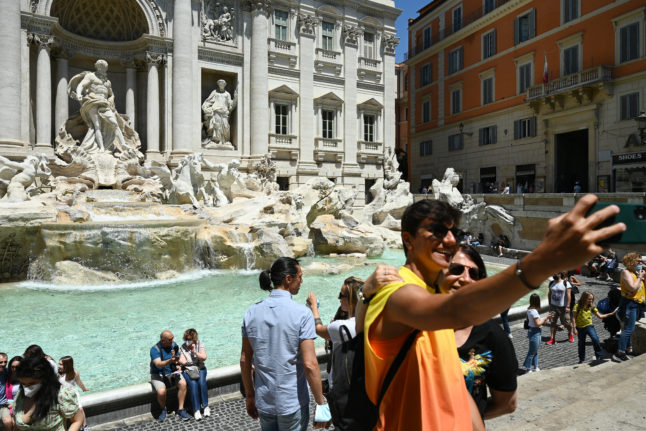Italy’s tourism earnings are predicted to total €17 billion this summer, restoring the industry to a state of health not seen since the start of the pandemic, according to a study released by the retailers’ association Comfcommercio on Monday.
Americans are the lead drivers of the recovery, the report shows, with 2.2 million US visitors expected to bring in €2.1 billion between July and September – 20 percent more than over the same period in 2019.
READ ALSO: MAP: Which parts of Italy will get the most tourism this summer?
Canadians, Australians and South Africans are also anticipated to make up a significant proportion of this year’s visitors.
The high value of the dollar against the euro is thought to be partly responsible for this year’s boom in US arrivals.
The euro slipped to parity with the dollar for the first time in nearly 20 years this month, as a cut in Russian gas supplies to Europe heightened fears of a recession in the eurozone.
It has since recovered a little, to around $1.02 per euro, but remains a huge bargain for visitors, giving tourists from dollar countries a spending power boost of well over 10 percent from six months ago.
The number of Spanish arrivals is also expected to return pre-pandemic levels this summer, with an estimated one million visitors due to arrive between July and September.
Domestic tourism is also up, with 35 million Italians travelling on holiday in their own country despite an ongoing cost of living crisis caused by soaring inflation and exacerbated by the war in Ukraine, according to a separate study by the agricultural association Coldiretti.
READ ALSO: Ferragosto: Why the long August holidays are untouchable for Italians
By contrast, the number of tourists coming to Italy from Asian countries is down; while EU sanctions introduced in the wake of Russia’s invasion of Ukraine have seen Russian tourism drop to near zero.
Germany, a key source of tourism particularly in the Italian south, was down 27 percent in July compared to 2019 – a drop thought to be caused by air travel disruption.
In a typical year, the majority of Italy’s tourists (14.1 percent) come from Germany, figures from Italy’s National Statistics Agency Istat show. Around three percent come from the US, and another three percent from the UK.
“The return of foreign tourism after three years helps to consolidate our economic recovery. The outlook, however, is uncertain due to the decrease in consumption, the unrest in air transport and the unknown pandemic,” said Confcommercio president Carlo Sangalli in a televised statement.
“Support for the tourism sector must therefore be among the priorities of the next executive in terms of combating expensive energy and reducing the tax burden,” he added.
Italy will vote for a new government in late September after its ‘unity’ coalition government collapsed in July, triggering snap elections.



 Please whitelist us to continue reading.
Please whitelist us to continue reading.
Member comments